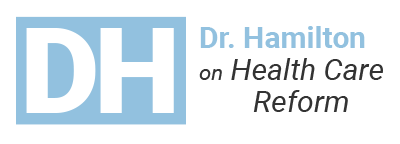This article will deal with the vital role the states can play in health care reform. Currently, under Section 1332 of the Affordable Care Act (ACA), states can apply for federal waivers to modify the act. However, allowable limits to those changes and the complicated waiver application process are stifling to the point that few states have applied for waivers or completed new programs.
The federal government takeover of the individual and small-group health insurance market has resulted in huge increases in premiums; insurance company monopolies; a very small individual insurance market; and fewer people insured.
The Trump administration has removed many of the obstructive features, but effective modification will require Congressional action. Federal funds currently going to insurance companies should go to the states as block grants to help low income and sick patients obtain their coverage from doctors and facilities of their choice.
At least 50% of the grants would go to assist people in obtaining private insurance coverage. An overlapping 50% would provide coverage for low-income people. A portion would provide funds for high-risk patients in ways that do not result in high premiums for everyone else. Those people receiving block grant funds, Medicaid or CHIPS could purchase insurance plans of their choice, including Health Savings Accounts (HSAs). Tax money would not be allowed for abortions.
This describes the surface of a very complicated process. Also, states vary considerably in their needs. Therefore these programs should be designed and administered by the states with only general guidance from the federal government. Subsequent changes will be much easier to make at the state, rather than the federal, level.
The next two articles will describe how expanding HSAs and designing plans for high-risk patients will serve all patients, likely at a lower cost.
Robert F. Hamilton, M.D., FACS
Godfrey, Illinois
618-402-3487
(first published in Advantage News)





